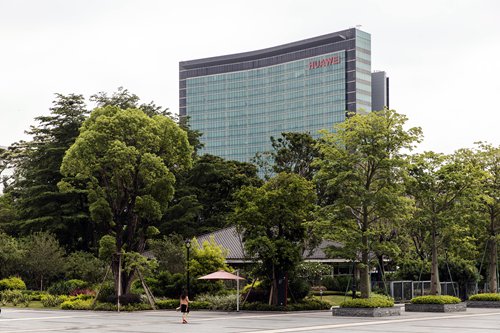HOME >> BUSINESS
S.China’s H1 economic growth shines
By Yang Kunyi and Zhang Hongpei Source:Global Times Published: 2019/8/1 20:28:40
Mature business model drives fast development of region

Huawei's headquarters in Shenzhen, South China's Guangdong Province Photo: VCG
Two pillar cities in the Guangdong-Hong Kong-Macao Greater Bay Area - Guangzhou and Shenzhen, both in South China's Guangdong Province - achieved robust GDP growth in the first half of the year mainly driven by active innovation and investment in strategic emerging industries.
GDP of Guangdong passed the threshold of 5 trillion yuan ($720 billion) in the first half of 2019 for the first time with year-on-year growth of 6.5 percent, above the nation's overall level of 6.3 percent year-on-year, data from the statistics bureau of Guangdong showed at the end of July.
Shenzhen, often dubbed China's Silicon Valley, saw its GDP growth rate reach 7.4 percent during the period, while that of the province's capital Guangzhou was 7.1 percent, according to the statistical bureau's website in each city.
Hong Kong and Macao, the two special administrative regions within the Guangdong-Hong Kong-Macao Greater Bay Area, have not yet released their first-half economic data.
The fast development of the region is attributable to its mature business model and cluster effect, said Mao Yanhua, a professor at the Institute of Guangdong, Hong Kong and Macao Development Studies at Sun Yat-sen University.
"The mature business model and massive investment in innovation in the Greater Bay Area means that it is the perfect place for new technologies and business to grow," Mao told the Global Times on Thursday.
The added value of advanced manufacturing in Shenzhen increased by 10.3 percent, accounting for 71.2 percent of the city's scale industrial output.
Shenzhen's exports of advanced mechanical and electrical products, including integrated circuits, reached 581.6 billion yuan, more than six folds the value of labor-intensive products.
"In Guangdong alone, there are more than 40,000 high-technology companies, more than any other province in the Chinese mainland," said Mao.
Mao added that the robust growth in the region also gives the economy more resilience against uncertainties caused by the ongoing China-US trade war.
"People are worried that the trade war will mean a shrinking market and relocation of factories to other countries," Mao said.
"But in fact because of the diversity in the export destinations, and the mature industrial chain in the region that cannot be easily replicated in other places, the economy is very resilient."
Song Ding, a research fellow at the Shenzhen-based China Development Institute, added that 40 years of market-economy development has given the region a strong ability to bounce back even in the face of dwindling global demand and the trade war. But urgent actions, including the sale of five land plots in Shenzhen in June, also helped sustain the high growth of the local economy.
"The combination of a healthy economic model developed by years of commercial experience and a timely injection of government intervention ensured that the region can maintain a high growth rate with minimal risks," Song said.
"The combination of a healthy economic model developed by years of commercial experience and a timely injection of government intervention ensured that the region can maintain a high growth rate with minimal risks," Song said.The GDP of Shenzhen surpassed its neighboring Hong Kong for the first time in 2018, as calculated by annual average exchange rates.Data from the Census and Statistics Department of Hong Kong showed its GDP grew 3 percent in 2018 to HK$2.845 trillion ($362.4 billion) based on the average annual exchange rates of the past year.The GDP of Shenzhen was 2.4221 trillion yuan, up 7.5 percent year-on-year.
Newspaper headline: S.China’s H1 growth robust